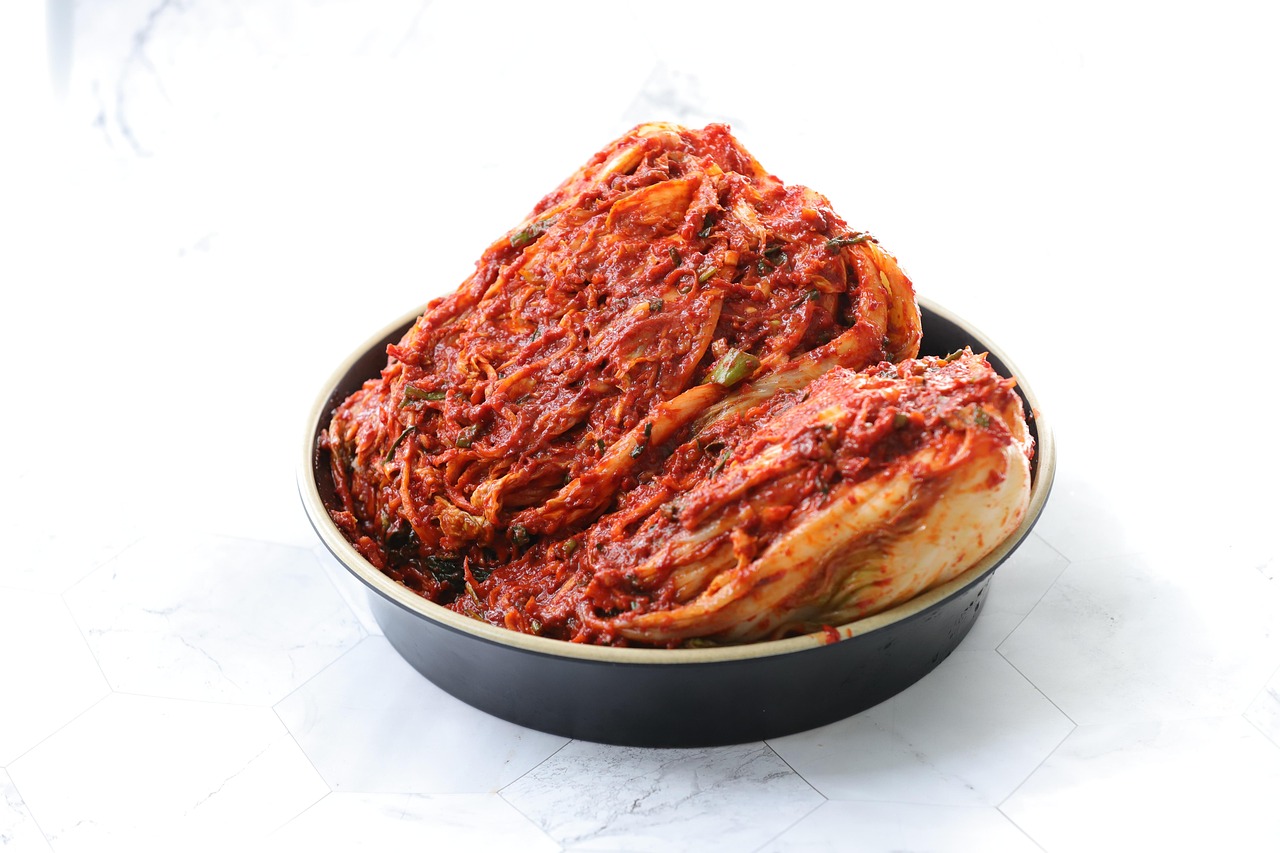This article delves into the world of three iconic Korean street foods: Bibimbap, Japchae, and Tteokbokki. Each dish not only offers a unique explosion of flavors but also embodies cultural significance, making them cherished staples in Korean cuisine.
Bibimbap is a colorful and nutritious meal that combines a variety of ingredients, including rice, vegetables, and protein. Its name translates to “mixed rice,” which perfectly encapsulates the dish’s essence. The vibrant presentation and mix of flavors have made Bibimbap a favorite among food lovers.
The preparation of Bibimbap is an art in itself. It begins with cooking rice, while an assortment of vegetables is sautéed separately. Common toppings include a fried egg and a dollop of gochujang, a Korean chili paste that adds a spicy kick. The final step involves mixing all the ingredients together just before serving, ensuring that each bite is a harmonious blend of flavors.
- Rice: The base of the dish, providing essential carbohydrates.
- Vegetables: Spinach, carrots, bean sprouts, and mushrooms are commonly used.
- Protein: Options range from beef to tofu, catering to various dietary preferences.
- Gochujang: This chili paste adds depth and spiciness to the dish.
Japchae is a savory noodle dish made from sweet potato starch noodles, known for their chewy texture. Stir-fried with an array of vegetables and often combined with meat, Japchae offers a slightly sweet flavor that appeals to a wide audience.
The process of making Japchae starts with soaking the sweet potato noodles until they are soft. These noodles are then stir-fried with a colorful mix of vegetables such as bell peppers, carrots, and onions. Seasoning with soy sauce and sesame oil enhances the overall flavor, making Japchae a delightful dish.
- Sweet Potato Noodles: The main ingredient, providing a unique texture.
- Vegetables: Bell peppers, carrots, and onions are staples.
- Meat: Beef or chicken is often included, but can be omitted for a vegetarian version.
Tteokbokki is a beloved Korean street food that consists of chewy rice cakes served in a spicy and sweet sauce. Its unique combination of textures and flavors makes it a popular choice for snack lovers.
The preparation begins with boiling the rice cakes until they are soft and chewy. They are then stir-fried in a sauce made from gochujang, sugar, and fish cakes, resulting in a dish that is both satisfying and flavorful.
- Cheese Tteokbokki: A creamy twist that has gained popularity.
- Seafood Tteokbokki: Incorporating seafood adds a new layer of flavor.
- Egg Tteokbokki: Often topped with boiled eggs for extra richness.
Korean street foods are best experienced in bustling markets and food stalls. Notable locations include Myeongdong in Seoul, where vendors serve fresh and authentic versions of these dishes, allowing visitors to savor the flavors of Korea.
Bibimbap, Japchae, and Tteokbokki are not just popular for their delicious taste; they also represent the essence of Korean culinary traditions. These dishes are enjoyed by locals and tourists alike, showcasing the rich cultural heritage of Korea.
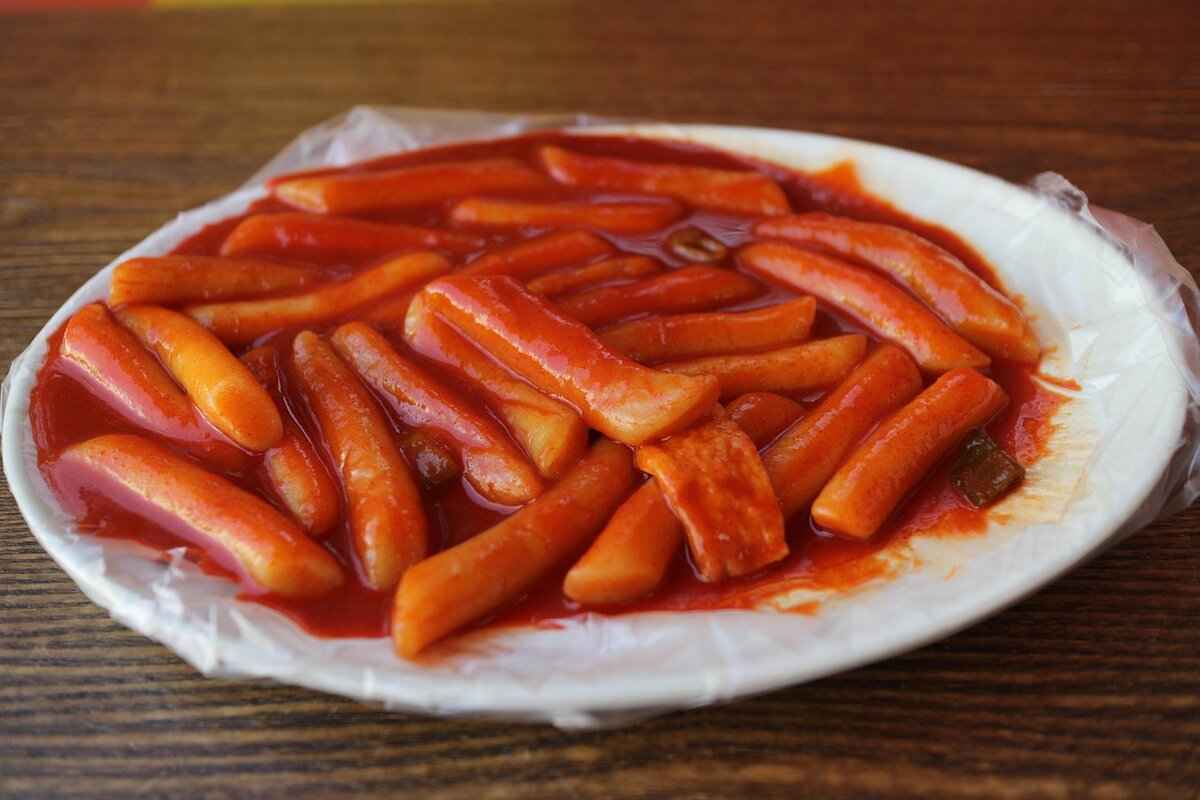
What is Bibimbap?
Bibimbap is a quintessential Korean dish that captivates both the eyes and the palate. This traditional meal is not just a feast for the senses; it is also a nutritional powerhouse. Combining rice, a vibrant array of vegetables, and a choice of protein, Bibimbap stands out as a versatile dish that appeals to a wide range of dietary preferences.
The name “Bibimbap” literally translates to “mixed rice,” which perfectly encapsulates the essence of this dish. The ingredients are typically served separately and then mixed together just before eating, allowing diners to enjoy the distinct flavors of each component. The colorful presentation, featuring hues of green, orange, yellow, and red, makes Bibimbap a visually stunning dish that is as enjoyable to look at as it is to eat.
The preparation of Bibimbap is both an art and a science. It begins with cooking the rice, which serves as the base of the dish. While the rice is cooking, various vegetables are sautéed to enhance their flavors and textures. Commonly used vegetables include:
- Spinach
- Carrots
- Bean sprouts
- Mushrooms
Once the ingredients are prepared, they are artfully arranged on top of the rice. A fried egg is often added as a finishing touch, providing a rich, creamy element to the dish. To elevate the flavor profile, Bibimbap is typically served with gochujang, a spicy and savory Korean chili paste that adds depth and heat.
Bibimbap’s ingredients can vary widely depending on regional preferences and personal tastes. While the base of rice remains constant, the choice of vegetables and protein can be tailored to suit individual dietary needs. Some popular ingredients include:
- Tofu (for a vegetarian option)
- Beef (often marinated for added flavor)
- Egg (usually fried or poached)
This flexibility allows Bibimbap to cater to both vegetarians and meat lovers alike, making it a universally appealing dish.
One of the standout features of Bibimbap is its health benefits. The dish is rich in vitamins and minerals, thanks to the variety of vegetables included. The combination of carbohydrates from the rice, protein from the meat or tofu, and fiber from the vegetables creates a well-balanced meal. Some of the health benefits include:
- High Nutrient Density: Packed with vitamins A, C, and K, as well as iron and calcium.
- Customizable: Easily adaptable to meet specific dietary needs, such as gluten-free or low-carb diets.
- Promotes Healthy Eating: Encourages the consumption of a diverse range of vegetables.
Indeed, Bibimbap is not a one-size-fits-all dish. Different regions in Korea boast their own unique takes on this classic meal. For example, Jeonju Bibimbap is renowned for its use of high-quality beef and a special sauce that enhances the overall flavor. Similarly, Yangdong Bibimbap features a mix of seasonal vegetables, showcasing the local produce.
In conclusion, Bibimbap is more than just a meal; it is a representation of Korean culture and culinary artistry. Its colorful ingredients, health benefits, and adaptability make it a beloved dish both in Korea and around the world. Whether enjoyed at a bustling street market or in a cozy restaurant, Bibimbap offers a delicious and nutritious option for anyone looking to explore the rich flavors of Korean cuisine.

How is Bibimbap Prepared?
Bibimbap, a traditional Korean dish, is not only a feast for the eyes but also a delight for the palate. This dish combines various ingredients that come together to create a symphony of flavors and textures. In this section, we will delve into the preparation of Bibimbap, exploring the steps involved and the key elements that make this dish truly special.
The preparation of Bibimbap begins with the essential base: rice. Typically, short-grain rice is used, which is known for its sticky texture. The rice is cooked until fluffy and tender, serving as the perfect canvas for the vibrant array of toppings. Once the rice is ready, it’s time to prepare the colorful vegetables.
Various vegetables are sautéed individually to preserve their unique flavors and textures. Common choices include:
- Spinach – blanched and seasoned with sesame oil and salt.
- Carrots – julienned and lightly sautéed to maintain a slight crunch.
- Bean Sprouts – quickly blanched and tossed with a bit of garlic.
- Mushrooms – shiitake or enoki mushrooms are often used for their earthy flavor.
After preparing the vegetables, the next step is to add a source of protein. Options can vary widely, from marinated beef (bulgogi) to tofu for a vegetarian version. The protein is typically stir-fried, allowing it to absorb the flavors of the marinade, which might include soy sauce, garlic, and sesame oil.
Once all the components are prepared, it’s time to assemble the Bibimbap. A generous scoop of rice is placed in a bowl, and the sautéed vegetables and protein are artfully arranged on top. To elevate the dish further, a fried egg is added, usually sunny-side up, allowing the yolk to create a rich sauce when mixed in.
Finally, no Bibimbap is complete without gochujang, a spicy Korean chili paste. This condiment not only adds heat but also depth of flavor. Diners can adjust the amount of gochujang to suit their taste, making each bowl a personalized experience. Additionally, a sprinkle of sesame seeds and a drizzle of sesame oil can enhance the dish’s aroma and visual appeal.
Bibimbap’s popularity can be attributed to its nutritional balance and the visual appeal of its vibrant colors. Each ingredient contributes essential nutrients, making it a wholesome meal. Furthermore, its adaptability allows for various dietary preferences, whether one is a meat lover or a vegetarian.
The cultural significance of Bibimbap also plays a role in its fame. Traditionally served in a hot stone bowl (dolsot), the dish continues to cook as it is served, creating a crispy layer of rice at the bottom. This unique presentation adds a sensory experience that is both enjoyable and memorable.
In conclusion, the preparation of Bibimbap is a delightful process that showcases the beauty of Korean cuisine. With its colorful ingredients, rich flavors, and health benefits, it’s no wonder that Bibimbap has become a beloved dish both in Korea and around the world.
Key Ingredients of Bibimbap
Bibimbap is a quintessential Korean dish that not only tantalizes the taste buds but also offers a feast for the eyes. The key to its vibrant appeal lies in its diverse ingredients, which contribute both flavor and nutritional value.
The beauty of Bibimbap is in its versatility. While the ingredients can vary based on regional preferences and seasonal availability, there are several staples that are commonly used:
- Spinach: This leafy green is often blanched and seasoned with sesame oil and salt, adding a rich, earthy flavor.
- Carrots: Usually julienned and sautéed, carrots provide a sweet crunch and a pop of color.
- Bean Sprouts: These crunchy sprouts add a refreshing texture and are typically lightly blanched to retain their crispness.
- Mushrooms: Varieties such as shiitake or enoki are commonly used, adding umami and depth to the dish.
- Zucchini: Sautéed zucchini adds a subtle flavor and complements the other vegetables.
- Egg: A fried or poached egg is often placed on top, providing richness and a creamy texture when mixed in.
- Protein: While Bibimbap can be vegetarian, it often includes beef, chicken, or tofu for added protein.
- Gochujang: This Korean chili paste is a key condiment that adds spice and depth, making the dish truly flavorful.
The combination of vegetables, protein, and rice in Bibimbap creates a balanced meal that is not only delicious but also rich in nutrients. Each ingredient contributes unique benefits:
- Vitamins and Minerals: The variety of vegetables provides essential vitamins such as A, C, and K, along with minerals like iron and calcium.
- Fiber: The inclusion of vegetables and beans offers dietary fiber, promoting digestive health.
- Protein: Adding meat or tofu ensures that the dish contains adequate protein, supporting muscle health and overall energy levels.
- Healthy Fats: Sesame oil, often used for seasoning, contains healthy fats that are beneficial for heart health.
Different regions in Korea have their own unique twists on Bibimbap. For example:
- Jeonju Bibimbap: Known for its premium ingredients, including high-quality beef and a special sauce, this version is a must-try.
- Yangpyeong Bibimbap: This variation includes local vegetables and is often served with a side of spicy sauce.
Bibimbap’s popularity extends beyond its taste; it represents a harmonious blend of flavors, colors, and textures. It is not just a meal; it is an experience that reflects Korean culture and culinary traditions. Whether enjoyed at home or from a street vendor, Bibimbap continues to captivate food lovers around the world.
Vegetarian vs. Meat Options
Bibimbap is a culinary masterpiece that transcends the boundaries of traditional Korean cuisine. This dish not only tantalizes the taste buds but also caters to a diverse range of dietary needs. One of its most appealing attributes is its versatility, particularly when it comes to accommodating vegetarians.
For those who prefer plant-based meals, Bibimbap can be easily modified by simply omitting meat or substituting it with tofu. This adaptation allows vegetarians to indulge in the dish without compromising on flavor or nutrition. The vibrant mix of vegetables in Bibimbap—such as spinach, carrots, and bean sprouts—ensures that every bite is packed with essential vitamins and minerals.
- Protein Source: Tofu is an excellent source of plant-based protein, making it a perfect alternative to meat.
- Low in Calories: Tofu is low in calories, allowing for a hearty meal without the added guilt.
- Versatile Flavor Absorption: Tofu absorbs flavors well, enhancing the overall taste of the dish when marinated or sautéed with spices.
Absolutely! Bibimbap remains a nutrient-dense option even when prepared without meat. The combination of colorful vegetables provides a wide array of antioxidants and phytonutrients. Additionally, the inclusion of a fried egg or tofu adds healthy fats and proteins, ensuring a balanced meal that supports overall health.
Different regions in Korea offer unique twists on Bibimbap that cater to various dietary preferences. For example, the Jeonju style is famous for its rich flavors and can easily be adapted to a vegetarian version by focusing on high-quality vegetables and tofu. This regional flexibility makes Bibimbap a dish that can be enjoyed by everyone, regardless of their dietary restrictions.
Creating a vegetarian Bibimbap at home is simple and allows for creativity. Here’s a quick guide:
1. Cook a serving of rice (white or brown).2. Sauté a variety of vegetables such as: - Spinach - Carrots - Zucchini - Mushrooms3. Add tofu, either pan-fried or grilled.4. Top with a fried egg (optional for vegans).5. Serve with gochujang and sesame oil for flavor.
The adaptability of Bibimbap makes it a popular choice among food lovers. Whether you are a meat-eater or a vegetarian, this dish offers a delicious experience that can be customized to fit your taste. The vibrant colors and fresh ingredients not only create an appealing presentation but also highlight the essence of Korean culinary traditions.
In summary, Bibimbap stands out as a dish that embraces diversity, making it suitable for various dietary preferences. Its ability to cater to vegetarians while maintaining its rich flavors is a testament to the creativity and flexibility of Korean cuisine.
Regional Variations of Bibimbap
Bibimbap is a cornerstone of Korean cuisine, celebrated not only for its vibrant presentation but also for its rich flavors and nutritional value. This dish is a delightful combination of rice, vegetables, and various proteins, topped with a fried egg and served with gochujang, a spicy red chili paste. However, what makes Bibimbap truly fascinating is its regional variations, each reflecting the unique culinary traditions and local ingredients of different areas in Korea.
Each region in Korea boasts its own distinctive version of Bibimbap, which highlights local ingredients and flavors. This diversity not only showcases the regional agricultural bounty but also provides a glimpse into the cultural identity of each area.
One of the most famous variations is Jeonju Bibimbap, which hails from the city of Jeonju, known as the birthplace of this iconic dish. Jeonju Bibimbap is renowned for its high-quality beef, which is marinated and cooked to perfection. Additionally, it includes a unique sauce made from sesame oil and gochujang, giving it a distinctive flavor profile. The use of fresh, locally sourced vegetables and a perfectly cooked egg on top further elevates this dish, making it a must-try for anyone visiting the region.
Moving to the Andong region, the local version of Bibimbap is characterized by its use of fermented soybean paste, known as doenjang. This ingredient adds a rich umami flavor that distinguishes Andong Bibimbap from others. Typically, it features a variety of seasonal vegetables and, often, a side of Andong jjimdak, a braised chicken dish, enhancing the overall dining experience.
In the coastal city of Busan, Bibimbap takes on a seafood twist. Known as Busan Bibimbap, this variation often includes fresh seafood such as octopus and shrimp, reflecting the city’s rich maritime culture. The seafood is lightly sautéed and combined with a mix of vegetables, providing a fresh and briny taste that contrasts beautifully with the rice and gochujang.
Seongnam, another region known for its Bibimbap, incorporates a variety of unique ingredients, including chrysanthemum leaves and perilla leaves, which add a fragrant aroma and distinct flavor. The local twist often features a homemade sauce that blends traditional spices, giving Seongnam Bibimbap a unique taste that stands out among its peers.
Many regions also offer vegetarian versions of Bibimbap, catering to diverse dietary preferences. For example, in Gyeongju, the vegetarian Bibimbap is packed with seasonal vegetables and often includes a variety of pickled items, enhancing the dish’s flavor complexity. This adaptability makes Bibimbap appealing to both meat-lovers and vegetarians alike.
Regardless of the variation, Bibimbap is a healthy choice. Packed with nutrients from a variety of vegetables, protein, and rice, it offers a balanced meal that supports overall well-being. The use of fresh ingredients across different regions ensures that each bowl of Bibimbap is not only delicious but also nutritious.
In summary, the regional variations of Bibimbap highlight the rich tapestry of Korean culinary traditions. Each version tells a story of local culture and ingredients, making it a dish that is both versatile and deeply rooted in the history of Korea. Whether you prefer the classic Jeonju style or the seafood twist from Busan, there is a Bibimbap for everyone to enjoy.
Health Benefits of Bibimbap
Bibimbap is a traditional Korean dish that not only delights the palate but also offers a wealth of health benefits. This vibrant meal, which translates to “mixed rice,” is a harmonious blend of various ingredients, each contributing to its nutritional profile. Let’s explore the remarkable health benefits of Bibimbap in detail.
What Nutrients Does Bibimbap Provide?
- Vitamins and Minerals: Bibimbap is rich in essential vitamins and minerals, primarily due to the diverse array of vegetables used. Ingredients like spinach, carrots, and mushrooms are packed with vitamins A, C, and K, as well as important minerals such as iron and calcium.
- Protein Sources: The inclusion of protein, whether from meat, tofu, or eggs, enhances the dish’s nutritional value. Protein is vital for muscle repair, immune function, and overall body health.
- Healthy Carbohydrates: The base of Bibimbap is typically steamed rice, which provides complex carbohydrates. These are a great source of energy and help sustain blood sugar levels.
How Does Bibimbap Support Digestive Health?Bibimbap is a fiber-rich meal due to its generous portion of vegetables. Fiber is crucial for digestive health as it aids in regular bowel movements and helps prevent constipation. Additionally, a fiber-rich diet can promote a healthy gut microbiome, which plays a role in overall health.
Can Bibimbap Help with Weight Management?For those looking to maintain or lose weight, Bibimbap can be a great option. The combination of vegetables, protein, and rice creates a filling meal that can help control appetite. The variety of ingredients also means that one can enjoy a satisfying meal without excessive calories. By adjusting portion sizes and ingredient choices, such as opting for less rice or more vegetables, Bibimbap can easily fit into a balanced diet.
Is Bibimbap Beneficial for Heart Health?The ingredients in Bibimbap can contribute positively to heart health. Many of the vegetables used are low in calories and high in nutrients, while the choice of protein can be tailored to include lean meats or plant-based options. Furthermore, the use of sesame oil as a dressing can provide healthy fats that are beneficial for cardiovascular health.
How Can Bibimbap Be Customized for Dietary Needs?Bibimbap is incredibly versatile, making it easy to customize for various dietary preferences. For vegetarians or vegans, simply substituting meat with tofu or additional vegetables ensures that everyone can enjoy this nutritious dish. Additionally, those with gluten sensitivities can use gluten-free soy sauce or skip the soy altogether.
What Makes Bibimbap a Balanced Meal?The balance of macronutrients in Bibimbap—carbohydrates, proteins, and fats—makes it an ideal meal option. The combination of these nutrients supports energy levels, muscle function, and overall health. Furthermore, the colorful presentation of Bibimbap is not just for aesthetics; it signifies a variety of nutrients being consumed in one meal.
In summary, Bibimbap is more than just a delicious dish; it is a powerhouse of nutrition that supports overall health. With its rich array of vegetables, proteins, and healthy carbohydrates, it offers numerous health benefits, making it a staple in Korean cuisine that can be enjoyed by everyone. Whether you are looking to boost your nutrient intake, manage your weight, or simply enjoy a flavorful meal, Bibimbap stands out as an excellent choice.

What is Japchae?
Japchae is a traditional Korean dish that has gained popularity not only in Korea but around the world. This dish is characterized by its sweet potato starch noodles, known as dangmyeon, which are stir-fried with a vibrant mix of vegetables and often accompanied by meat. The combination of flavors and textures makes Japchae a beloved choice for many, whether served as a main dish or a side.
The preparation of Japchae is a delightful process that begins with soaking the sweet potato noodles in warm water until they become soft and pliable. Once prepared, the noodles are stir-fried with a variety of vegetables such as spinach, carrots, bell peppers, and onions. The dish is typically seasoned with soy sauce, sesame oil, and a touch of sugar to enhance its slightly sweet flavor. The final touch often includes sesame seeds and green onions for added texture and visual appeal.
- Sweet Potato Noodles – The foundation of the dish, providing a unique chewy texture.
- Vegetables – Commonly used include bell peppers, carrots, onions, and mushrooms.
- Meat – Often beef or chicken, but can be substituted with tofu for a vegetarian option.
- Seasonings – Soy sauce, sesame oil, and sugar are essential for flavoring.
Japchae is unique due to its versatility and flavor profile. It can be enjoyed warm or cold, making it suitable for various occasions, from family gatherings to festive celebrations. The dish is often served during special occasions like birthdays and holidays, symbolizing prosperity and good fortune. Its colorful presentation not only pleases the eye but also ensures a balanced intake of nutrients.
In addition to its delightful taste, Japchae offers several health benefits. The sweet potato noodles are a good source of carbohydrates, providing energy without the heaviness often associated with wheat-based noodles. The variety of vegetables included in the dish contributes essential vitamins and minerals, promoting overall health. Moreover, the use of sesame oil adds healthy fats to the meal, supporting heart health.
Japchae can be found in many Korean restaurants and is also a popular dish at Korean celebrations and gatherings. Street food vendors may offer their own versions, often with unique twists. For those interested in making Japchae at home, numerous recipes are available that cater to different dietary preferences, making it accessible for everyone.
The combination of flavors, textures, and colors in Japchae makes it a favorite among many. Its slightly sweet taste pairs well with the savory elements of the stir-fried meat and vegetables, creating a harmonious dish that appeals to a wide range of palates. Whether enjoyed as a standalone meal or as part of a larger feast, Japchae continues to hold a special place in the hearts of food lovers globally.
How is Japchae Made?
Japchae, a delightful Korean dish, is not only loved for its unique flavor but also for its rich texture and colorful presentation. This dish has a fascinating history and is often served during special occasions and celebrations, making it a significant part of Korean culinary traditions.
The process of making Japchae is both an art and a science, involving several key steps that contribute to its distinctive taste and texture. First, the sweet potato noodles, known as dangmyeon, are soaked in warm water until they soften. This soaking process is crucial as it allows the noodles to achieve the perfect chewy consistency that is characteristic of Japchae.
Once the noodles are ready, they are drained and set aside. The next step involves preparing the vegetables. Commonly used vegetables include spinach, carrots, bell peppers, and onions. These ingredients are sliced into thin strips to ensure they cook evenly and quickly. The vibrant colors of these vegetables not only enhance the visual appeal of the dish but also add various textures and flavors.
In a large skillet or wok, a small amount of oil is heated over medium-high heat. The sliced vegetables are then added and stir-fried for a few minutes until they are tender yet still crisp. This quick cooking method helps to retain the nutrients and bright colors of the vegetables. Once cooked, the vegetables are removed from the pan and set aside.
Next, the sweet potato noodles are stir-fried in the same pan, allowing them to absorb the flavors left behind by the vegetables. At this stage, the noodles are seasoned with soy sauce and sesame oil, which are essential ingredients that enhance the dish’s overall flavor profile. The combination of these seasonings creates a savory and slightly nutty taste that is simply irresistible.
After the noodles have been thoroughly mixed with the seasonings, the cooked vegetables are added back into the pan. Everything is tossed together to ensure that the flavors meld perfectly. For added protein, sliced beef or chicken can be included, making Japchae a more filling meal. However, for a vegetarian version, tofu can be used as an excellent substitute.
Finally, Japchae is garnished with toasted sesame seeds and sometimes topped with a sprinkle of chopped green onions for an extra burst of flavor. The dish can be served warm or at room temperature, making it versatile for different occasions.
- Sweet potato noodles (dangmyeon)
- Vegetables (spinach, carrots, bell peppers, onions)
- Protein (beef, chicken, or tofu)
- Soy sauce
- Sesame oil
- Sesame seeds
Japchae is not just a dish; it’s a celebration of flavors and textures that reflects the heart of Korean cuisine. With its combination of chewy noodles, vibrant vegetables, and savory seasonings, it is no wonder that Japchae is a beloved dish among many. Whether enjoyed at a family gathering or as a street food delight, Japchae continues to captivate the taste buds of those who experience it.
Common Ingredients in Japchae
Japchae, a beloved dish in Korean cuisine, is renowned for its unique combination of flavors and textures. This savory noodle dish is not only a staple at festive gatherings but also a popular choice for everyday meals. One of the reasons for its widespread appeal is the vibrant mix of ingredients that make up this dish.
The essence of Japchae lies in its diverse ingredients, which contribute to its colorful presentation and rich taste. The following components are commonly found in this dish:
- Sweet Potato Starch Noodles: These noodles, known as dangmyeon, are the heart of Japchae. They have a chewy texture and absorb flavors beautifully.
- Vegetables: A variety of vegetables are used in Japchae, including:
- Bell Peppers: Their sweet and crunchy texture adds a delightful contrast to the dish.
- Carrots: Sliced thinly, they provide a subtle sweetness and vibrant color.
- Onions: Sautéed until translucent, onions enhance the overall flavor profile.
- Spinach: This leafy green adds a nutritious boost and a pop of color.
- Mushrooms: Varieties like shiitake or button mushrooms add an earthy flavor.
- Protein: Traditionally, Japchae is made with beef or chicken, but it can also be prepared with tofu for a vegetarian option.
- Seasonings: The dish is typically seasoned with soy sauce, sesame oil, and a touch of sugar to balance the flavors.
The combination of these ingredients not only creates a visually appealing dish but also offers a range of nutritional benefits. The colorful array of vegetables is rich in vitamins and minerals, contributing to overall health. For instance, bell peppers are high in vitamin C, while spinach provides iron and calcium. The inclusion of protein, whether from meat or tofu, ensures that the dish is satisfying and nourishing.
Each ingredient in Japchae plays a crucial role in building its complex flavor profile. The sweet potato noodles provide a neutral base that absorbs the savory seasonings, while the vegetables add freshness and crunch. The balance of sweet, savory, and umami flavors is achieved through the careful selection and preparation of these components.
One of the most appealing aspects of Japchae is its versatility. Home cooks can easily modify the ingredients based on personal preferences or seasonal availability. For example, adding zucchini or broccoli can introduce new textures and flavors. Additionally, those with dietary restrictions can substitute traditional proteins with plant-based alternatives, making Japchae a dish that accommodates various dietary needs.
If you’re eager to try authentic Japchae, local Korean restaurants often feature this dish on their menus. Additionally, many Korean festivals and markets showcase vendors serving freshly made Japchae, allowing you to experience its true essence.
In conclusion, the common ingredients in Japchae—sweet potato starch noodles, a variety of vegetables, and protein—come together to create a dish that is not only delicious but also visually stunning. The ability to customize Japchae further enhances its appeal, making it a favorite among both locals and visitors to Korean cuisine.
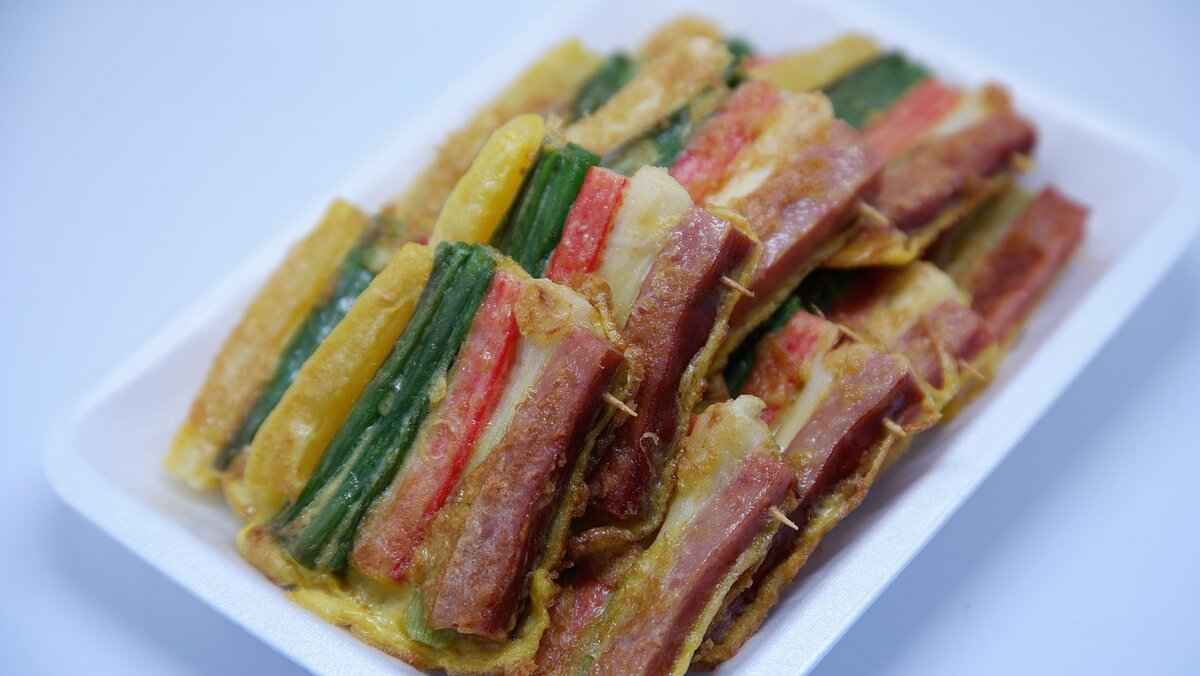
What Makes Tteokbokki Unique?
Tteokbokki is not just a dish; it’s a cultural icon that embodies the spirit of Korean street food. This delightful treat consists of chewy rice cakes, often accompanied by a rich, spicy, and sweet sauce that tantalizes the taste buds. As one of the most popular street foods in Korea, Tteokbokki has gained a dedicated following both locally and internationally.
The primary ingredient in Tteokbokki is tteok, which are cylindrical rice cakes made from glutinous rice. These rice cakes are known for their chewy texture, which becomes even more pronounced when cooked. The sauce is typically made from gochujang (Korean chili paste), sugar, and sometimes soy sauce, creating a perfect balance of spicy and sweet flavors. Additional ingredients can include:
- Fish cakes
- Hard-boiled eggs
- Green onions
- Vegetables such as cabbage or carrots
- Cheese (in some modern variations)
The preparation of Tteokbokki is relatively straightforward, making it a favorite among street food vendors. The process begins with boiling the rice cakes until they become soft. Next, they are stir-fried in the spicy sauce until they are well-coated and heated through. The addition of fish cakes and vegetables enhances the dish’s flavor and texture, providing a satisfying experience with every bite.
Tteokbokki has evolved over the years, leading to numerous variations that cater to different tastes. Some popular adaptations include:
- Cheese Tteokbokki: A modern twist where melted cheese is added, creating a creamy texture that complements the spiciness.
- Jjajang Tteokbokki: This version incorporates a black bean sauce, giving it a unique flavor profile.
- Seafood Tteokbokki: Includes ingredients like squid or shrimp for a seafood twist.
Tteokbokki can be found in various places across Korea, from bustling street markets to cozy restaurants. Notable locations include:
- Myeongdong: A popular shopping district in Seoul, known for its vibrant street food scene.
- Dongdaemun: Famous for its night market, where vendors serve freshly made Tteokbokki.
- Local eateries: Many Korean restaurants offer their unique take on this beloved dish.
The popularity of Tteokbokki can be attributed to several factors. Its affordability makes it accessible to a wide audience, while its versatility allows for endless customization. Additionally, Tteokbokki is often associated with nostalgia for many Koreans, as it is a staple of childhood memories and social gatherings. The dish is not only a quick snack but also a comfort food that brings people together.
In summary, Tteokbokki is a unique and beloved dish that offers a delightful combination of flavors and textures. Whether enjoyed as a quick snack on the streets of Seoul or as a comforting meal at home, it continues to capture the hearts of food lovers everywhere.
How is Tteokbokki Prepared?
Tteokbokki is one of the most iconic and beloved street foods in Korea, known for its unique combination of flavors and textures. This dish primarily features chewy rice cakes, which are stir-fried in a spicy and sweet sauce. The preparation of Tteokbokki is not only straightforward but also allows for a variety of adaptations, making it a favorite among many.
The essential components of Tteokbokki include:
- Rice Cakes (Tteok): The main ingredient, these chewy cakes are made from glutinous rice flour.
- Gochujang: This Korean chili paste adds a rich, spicy flavor and a beautiful red color.
- Sugar: Balances the heat of the gochujang, creating a sweet and spicy profile.
- Fish Cakes: Often added for texture and flavor, they are a common ingredient in many variations.
- Vegetables: Common additions include scallions, cabbage, and carrots.
The preparation of Tteokbokki involves several key steps:
1. Start by boiling the rice cakes in water until they become soft and chewy.2. Drain the rice cakes and set them aside.3. In a pan, combine gochujang, sugar, and water to create the sauce. Bring it to a simmer.4. Add fish cakes and any desired vegetables to the sauce, allowing them to cook through.5. Finally, add the boiled rice cakes to the pan, stirring well to coat them in the sauce. Cook for a few more minutes until everything is heated through and well combined.
Tteokbokki stands out not only for its flavor but also for its texture. The chewy rice cakes provide a satisfying bite, while the sauce envelops them in a sweet and spicy glaze. This dish can be enjoyed as a snack or a meal, making it versatile for any occasion.
While the classic version is delicious on its own, there are many variations of Tteokbokki that cater to different tastes:
- Cheese Tteokbokki: Melted cheese is added for a creamy texture that complements the spiciness.
- Seafood Tteokbokki: Incorporates shrimp or squid for an oceanic twist.
- Vegetarian Tteokbokki: Omits fish cakes and incorporates more vegetables or tofu.
Tteokbokki is widely available in Korea, found in street food stalls, markets, and restaurants. Popular areas like Myeongdong and Dongdaemun are famous for their Tteokbokki vendors, where you can enjoy this dish fresh and hot.
The popularity of Tteokbokki can be attributed to its affordability, convenience, and flavor. It is a quick snack that packs a punch in terms of taste and satisfaction, making it a go-to choice for many. Additionally, the dish’s cultural significance as a comfort food adds to its charm, attracting both locals and tourists alike.
Variations of Tteokbokki
Tteokbokki, a beloved Korean street food, is not just a single dish but a canvas for culinary creativity. While the classic version features chewy rice cakes drenched in a spicy-sweet sauce, the variations of Tteokbokki are where this dish truly shines, showcasing a delightful range of flavors and textures that cater to diverse palates.
Among the most popular variations, the addition of cheese has taken the street food scene by storm. This version, often referred to as “cheese Tteokbokki,” features a gooey layer of melted cheese that complements the spicy sauce, creating a harmonious blend of flavors. The creaminess of the cheese balances the heat, making it an irresistible option for those who enjoy a milder taste.
Another variation includes the incorporation of eggs, typically in the form of a soft-boiled or poached egg. The rich yolk adds a luxurious texture and depth of flavor, enriching the overall experience. When mixed into the Tteokbokki, the egg creates a creamy sauce that coats the rice cakes, enhancing each bite with a velvety finish.
Seafood Tteokbokki is yet another exciting variation, where ingredients like shrimp, squid, or even fish cakes are added to the mix. This version infuses the dish with a briny flavor that contrasts beautifully with the sweet and spicy sauce. The seafood not only adds a different taste but also introduces a delightful chewiness that complements the rice cakes.
For those with a sweet tooth, there are dessert-style Tteokbokki options. These versions often feature a sauce made from sweetened soy sauce or fruit-based sauces, appealing to those who prefer a less spicy experience. Topped with fruits or sweetened ingredients, these variations provide a unique twist that showcases the versatility of Tteokbokki.
Regional differences in Tteokbokki also contribute to its diverse range. For instance, some areas may include kimchi for an added tang, while others might feature a more robust sauce with extra spices. These regional styles reflect local tastes and preferences, making Tteokbokki a dish that evolves based on where you are in Korea.
The variations of Tteokbokki not only highlight the creativity of Korean street food vendors but also cater to a wide array of dietary preferences and flavor profiles. Whether you’re a fan of spicy, cheesy, or sweet flavors, there’s a Tteokbokki variation that will surely delight your taste buds. Its adaptability and the ability to incorporate local ingredients make it a staple in Korean cuisine, loved by both locals and tourists alike.
In conclusion, Tteokbokki is more than just a dish; it’s a culinary adventure that invites you to explore different flavors and textures. With each variation offering a unique taste experience, Tteokbokki continues to be a favorite among food lovers around the world.
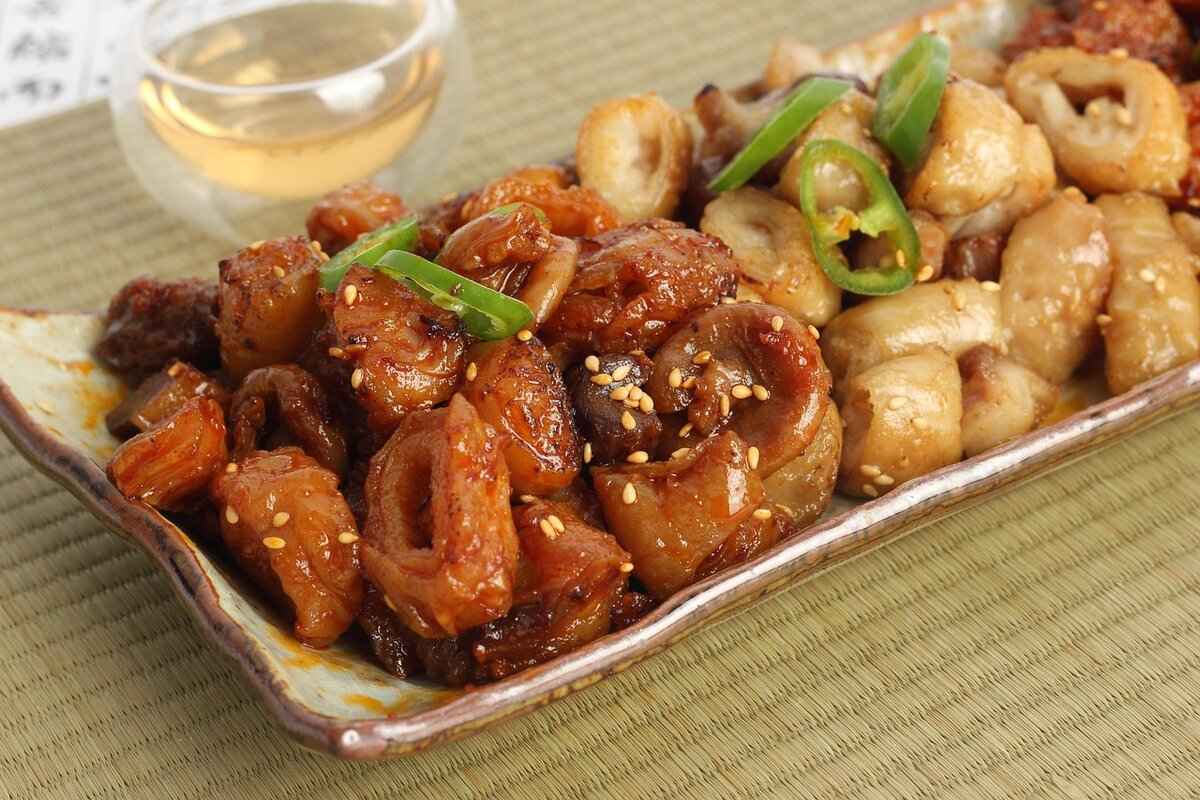
Where to Find These Street Foods?
Korean street food is a vibrant tapestry of flavors and textures, reflecting the rich culinary heritage of the country. These delightful dishes can be found in bustling markets, food stalls, and restaurants, offering an authentic taste of Korea. Among the most famous locations is Myeongdong in Seoul, where the aroma of sizzling street food fills the air, enticing locals and tourists alike.
Myeongdong is renowned for its lively atmosphere and diverse food offerings. As you stroll through the crowded streets, you’ll encounter a variety of vendors cooking up mouthwatering dishes right before your eyes. The combination of fresh ingredients and skilled preparation creates a unique dining experience that is hard to replicate.
- Tteokbokki: Spicy rice cakes stir-fried in a sweet and savory sauce.
- Hotteok: Sweet pancakes filled with brown sugar, nuts, and cinnamon.
- Gyeran-ppang: Korean egg bread, fluffy and warm, perfect for a quick snack.
- Odeng: Fish cakes served on skewers, often accompanied by a warm broth.
Street food markets like Myeongdong offer a unique blend of affordability and variety. Visitors can sample multiple dishes without breaking the bank, making it an ideal spot for food lovers. The communal atmosphere fosters social interaction, allowing people to share their experiences and recommendations.
While Myeongdong is a must-visit, there are other notable areas to explore:
- Gwangjang Market: Famous for its bindaetteok (mung bean pancakes) and mayak gimbap (addictive mini rice rolls).
- Namdaemun Market: Offers a wide range of street food, including kalguksu (handmade knife-cut noodles) and mandu (dumplings).
- Hongdae Area: Known for its youthful vibe, featuring trendy food stalls and innovative dishes.
When visiting Korean street food markets, it’s essential to keep a few tips in mind:
- Cash is King: Many vendors only accept cash, so it’s wise to have enough on hand.
- Be Adventurous: Don’t hesitate to try new dishes; you might discover a new favorite!
- Timing Matters: Visit during peak hours for the freshest food and a livelier atmosphere.
Whether you’re a seasoned foodie or a curious traveler, exploring Korean street food is an experience not to be missed. From the bustling streets of Myeongdong to hidden gems in other markets, the variety and flavor of these dishes are sure to leave a lasting impression. So grab your chopsticks and get ready to indulge in the delicious world of Korean street food!
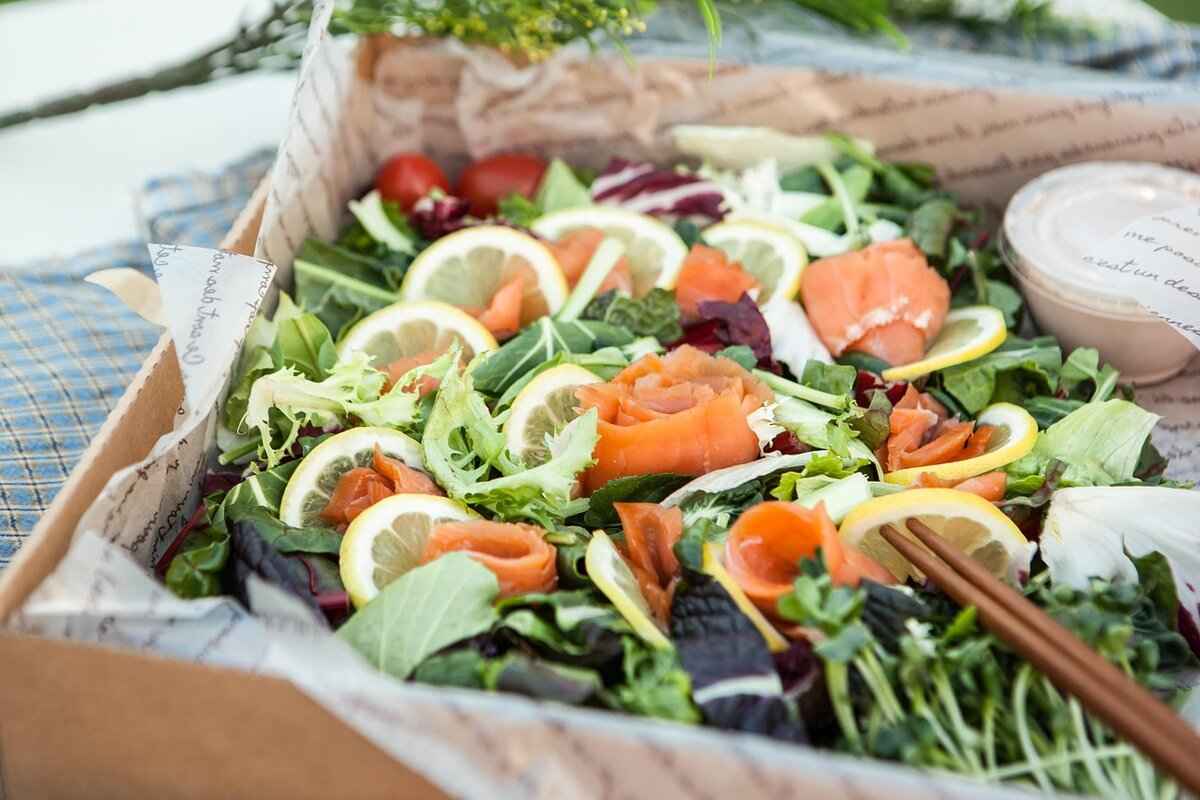
Why Are These Dishes Popular?
Korean cuisine is renowned for its rich flavors and cultural significance, and three dishes that stand out in this culinary landscape are Bibimbap, Japchae, and Tteokbokki. These popular street foods not only tantalize the taste buds but also encapsulate the essence of Korean traditions, making them beloved by both locals and tourists.
Bibimbap is a colorful and nutritious dish that showcases a harmonious blend of rice, assorted vegetables, and protein, often topped with a fried egg. Its vibrant presentation reflects the Korean philosophy of balancing flavors and colors, making it visually appealing as well as delicious.
Japchae is a savory noodle dish made from sweet potato starch noodles, known for their chewy texture. Stir-fried with a medley of vegetables and sometimes meat, Japchae offers a slightly sweet flavor profile that delights many palates. Its versatility allows for numerous variations, making it a staple at celebrations and everyday meals alike.
Tteokbokki, a beloved Korean street food, features chewy rice cakes simmered in a spicy-sweet sauce. Its unique texture and flavor combination make it a favorite snack for many. Often found in bustling street markets, Tteokbokki is typically served with fish cakes and boiled eggs, enhancing its hearty appeal.
The popularity of Bibimbap, Japchae, and Tteokbokki extends beyond their flavors; they serve as cultural symbols that represent the communal aspect of Korean dining. Traditionally, meals are shared, and these dishes encourage togetherness, making them a perfect choice for gatherings and celebrations. The act of mixing Bibimbap’s ingredients symbolizes harmony and unity, while Japchae is often prepared for special occasions, showcasing the importance of food in cultural rituals.
These iconic dishes can be found in various settings, from street vendors to upscale restaurants. Areas like Myeongdong in Seoul are famous for their vibrant food stalls, where visitors can indulge in freshly prepared Bibimbap, Japchae, and Tteokbokki. Additionally, many Korean restaurants worldwide now offer these dishes, making it easier for international food lovers to experience authentic Korean flavors.
The appeal of Bibimbap, Japchae, and Tteokbokki spans generations. Their flavors cater to diverse taste preferences, and their nutritional profiles make them suitable for health-conscious individuals. Moreover, the adaptability of these dishes allows for vegetarian and vegan variations, ensuring that everyone can enjoy them. The emotional connection that many Koreans have with these foods, often tied to childhood memories and family gatherings, further enhances their popularity.
Each dish is not only delicious but also packed with nutrients. Bibimbap is rich in vitamins and minerals from its variety of vegetables, while Japchae provides a good source of carbohydrates and fiber. Tteokbokki, though indulgent, can be made healthier by incorporating more vegetables and lean proteins. This balance of flavors and nutrients makes these dishes a wholesome choice for any meal.
In conclusion, the enduring popularity of Bibimbap, Japchae, and Tteokbokki is a testament to their rich flavors, cultural significance, and nutritional benefits. These dishes are not just meals; they are a celebration of Korean heritage and a delightful experience for anyone who has the pleasure of tasting them.
Frequently Asked Questions
- What is the main ingredient in Bibimbap?
The main ingredient in Bibimbap is rice, which is complemented by a variety of vegetables, protein, and a fried egg. The colorful mix makes it not just tasty but also visually appealing!
- Is Japchae gluten-free?
Yes! Japchae is made with sweet potato starch noodles, which are naturally gluten-free. Just be sure to check any sauces or added ingredients for gluten content if you’re sensitive.
- Can Tteokbokki be made vegetarian?
Absolutely! You can easily make Tteokbokki vegetarian by omitting fish cakes and using vegetable broth instead of the traditional ingredients. It’s still delicious and satisfying!
- Where can I find authentic Korean street food?
You can find authentic Korean street food at local markets, food stalls, and restaurants. In Seoul, Myeongdong is a hotspot where you can indulge in these delightful dishes.
- Are these dishes spicy?
It depends! Bibimbap can be adjusted to your spice level with gochujang, while Tteokbokki is typically spicy. Japchae is usually mild, making it a great option if you prefer less heat.

